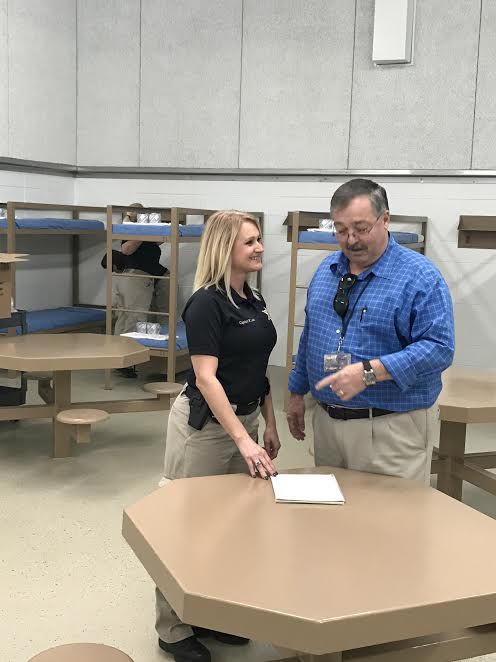
Locals join thousands in NOLA women’s march
January 24, 2017
Ellender student wins Teenager of the Year
January 24, 2017The jumpsuits, some red and some orange, are stacked neatly on shelves, near some pale green spare mattresses. Finishing touches are still being made. But Terrebonne Parish Sheriff Jerry Larpenter says he expects female inmates should start populating a new women’s jail by Feb. 1.
“Everything’s just about ready,” Larpenter said as he discussed placement of visitor chairs in the front lobby.
The women’s jail, housed within the building once used as the parish’s juvenile detention center, will be able to house up to 130 inmates. The main jail at Ashland – currently a co-ed facility – has 80 women currently, out of a total capacity of 650.
Once the women’s jail is completed the parish’s total capacity – between it, the men’s jail and a small population on the top floor of the parish’s courthouse annex – will be 850.
“I’ve been running jails for a long time and started with 90 beds,” Larpenter said. “Crime is not going to stop and you are going to have hardcore prisoners that all they want to do is do drugs, steal and hurt people.”
The new operation will have four housing pods, a visitation system with glass between visitors and inmates, and video capability for inmates to communicate with their families via the internet under close supervision.
Capt. Rhonda Ledet, who will serve as the warden of the women’s jail, said that will allow inmates to communicate with their young children, who are not allowed to visit personally.
Ledet has done a major portion of the planning work for the women’s jail, down to selecting the neutral beige color of its interior walls.
Women will have their own medical section which will be fully staffed. There is a library set up for in-site reading, along with a law library and a bank of computers.
Ledet has developed plans with Larpenter for inmates to use sewing machines on which they will repair and create their own clothing for use while they are incarcerated.
Larpenter said he saved the parish a sizeable sum of money, with the costs for the renovation and furnishing of what had been the juvenile detention center estimated at between $150,000 to $200,000.
Much of the work on the interior was done by Larpenter’s inmate labor force.
“It’s not our fault in law enforcement that we have to build jails and prisons,” Larpenter said. •







